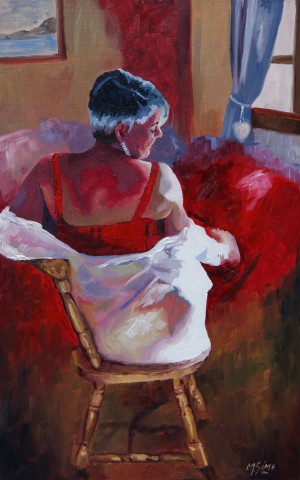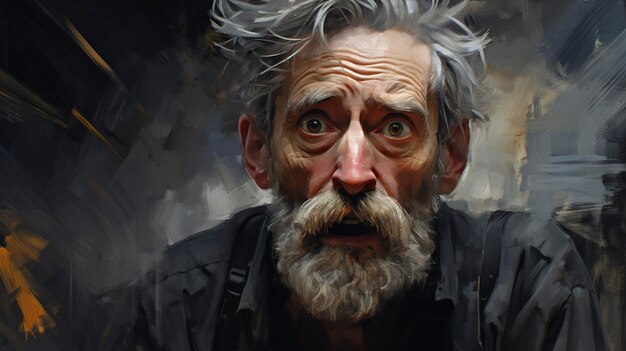The Evolution of Art: A Comprehensive Overview to Figurative Oil Painting
The Evolution of Art: A Comprehensive Overview to Figurative Oil Painting
Blog Article
The Duty of Feeling and Expression in Figurative Oil Paint: A Comprehensive Analysis of Topic Issue and Structure
The interaction of emotion and expression in metaphorical oil painting offers as a critical lens where one can analyze the complex connection between subject and make-up. Artists harness numerous strategies, from color choice to brushstroke dynamics, to grow emotional vibration within their jobs. This nuanced orchestration not only shapes visitor assumption yet likewise welcomes a much deeper questions right into just how these components integrate to reflect the complexities of human experience. As we discover this abundant surface, one should take into consideration exactly how details study illuminate the more comprehensive ramifications of these creative options.
Recognizing Emotion in Art
Feeling in art offers as an effective channel for expression, enabling musicians to convey intricate feelings with their job. In figurative oil painting, this emotional deepness is typically portrayed with the representation of the human number, capturing the subtleties of human experience. The selection of topic, shade combination, and brushwork all add to the emotional vibration of a piece.
Artists regularly draw upon personal experiences, societal concerns, or universal styles to stimulate feelings in the audience. For circumstances, a picture may show susceptability, while a vibrant figure in movement can signify freedom or chaos. These emotional strings connect the audience to the art work, fostering a discussion that transcends the visual tool.
Furthermore, the interaction in between light and shadow can magnify emotional strength, assisting the viewer's look and accentuating certain aspects within the make-up. Making use of texture in oil paint better adds layers of intricacy, inviting a tactile reaction that improves the emotional experience. On the whole, comprehending feeling in art is crucial for appreciating the subtleties that define figurative oil paint, as it changes simple representation into an extensive expedition of the human problem.
Crucial Element of Structure
In the realm of metaphorical oil painting, the make-up serves as the underlying structure that arranges aesthetic aspects and improves the emotional narrative. Vital parts of make-up consist of balance, contrast, prime focus, and rhythm, each adding to the total effect of the art work.
Balance refers to the distribution of aesthetic weight within the painting, which can be accomplished via unbalanced or symmetrical arrangements. A well-balanced composition gives security, enabling the viewer to involve with the piece harmoniously - figurative oil painting. Contrast, on the various other hand, involves juxtaposing various aspects, such as light and dark or warm and awesome shades, to direct the visitor's eye and stimulate psychological reactions
The centerpiece is critical, as it directs attention to the most substantial part of the paint, frequently highlighting the emotional core of the story. With techniques like shade saturation or positioning, musicians can stress this area successfully. Rhythm pertains to the repetition of aspects, producing a sense of motion and flow throughout the make-up. By skillfully integrating these crucial elements, artists can craft psychologically powerful and engaging metaphorical oil paints that mesmerize and engage their target market.
Topic Matter and Its Impact
Subject plays a pivotal function in metaphorical oil paint, as it not only works as the structure for the story yet also shapes the visitor's interpretation and psychological involvement with the art work. The choice of subject-- be it a solitary number, a team dynamic, or a thematic representation-- straight affects the psychological environment conveyed to the audience.

As an example, portraits typically stimulate individual links, disclosing the intricacies of human expression and personality, while scenes portraying common tasks can produce a sense of belonging or fond memories. The cultural and historical context of the subject issue enriches the visitor's understanding, motivating go to this site deeper representations on societal standards, worths, and the human problem.
Different topics also create varying levels of involvement; a remarkable problem depicted with numbers in stress may evoke feelings of stress and anxiety or compassion, while peaceful landscapes can conjure up peace and consideration. Inevitably, the impact of topic in metaphorical oil paint is profound, as it acts as a channel for psychological resonance, assisting the viewer's action and interpretation, and cultivating a connection between the art work and the observer. This interaction is necessary for the effective interaction of the artist's intent.
Strategies for Stimulating Feelings
The efficiency of metaphorical oil paint in sharing emotions is substantially affected by the techniques employed by the artist. One of the most crucial approaches is making use of shade concept, where the strategic selection of shades can evoke certain psychological feedbacks. Cozy shades, such as oranges and reds, often elicit feelings of passion or aggression, while cooler tones like blues and eco-friendlies often tend to stimulate peace or despair.
An additional essential technique is the manipulation of light and darkness, referred to as chiaroscuro. This approach boosts the three-dimensionality of numbers, producing dramatic contrasts that can magnify emotional deepness. The positioning of light can guide audiences' emotions, highlighting specific components of the structure.
Brushwork likewise plays an important role; loose, expressive strokes can share power and spontaneity, whereas smoother techniques might recommend harmony or precision. Additionally, the arrangement of topics within the make-up can influence emotional impact. Close closeness can recommend affection, while distance may indicate seclusion.
Ultimately, the combination of these techniques makes it possible for artists to craft narratives that resonate with the visitor, transforming a plain visual experience right into an expressive emotional journey. - figurative oil painting

Situation Researches of Significant Functions
Taking a look at remarkable works of metaphorical oil paint reveals exactly how different techniques are employed to stimulate effective emotions. browse around these guys One exemplary instance is Edvard Munch's "The Scream," where the altered figure and swirling background share existential fear. Munch's use color-- deep blues and vivid oranges-- escalates the emotional impact, showcasing just how palette options can shape visitor experience.
One more substantial job is Pablo Picasso's "Les Demoiselles d'Avignon." Below, fragmented kinds and bold brushstrokes reflect a tumultuous emotional landscape, challenging conventional depictions of the female figure. Picasso's innovative structure not just catches the customer's interest however likewise invites consideration on themes of identity and sexuality.
In Addition, Frida Kahlo's "Both Fridas" supplies an emotional expedition of duality and self-identity. The contrasting figures, connected by a common heart, exhibit Kahlo's psychological depth and personal narrative. figurative oil painting. Her thorough focus to information and symbolic components serve to engage viewers on a natural degree
These study emphasize the profound connection between emotion and composition in figurative oil painting, exposing how musicians harness strategy to connect complicated feelings and narratives that resonate across time and culture.

Conclusion
Finally, the interaction of emotion and expression in figurative oil paint significantly improves the viewer's experience and interpretation of the artwork. Via a careful choice of subject and compositional techniques, musicians share extensive stories that reverberate on both universal and personal degrees. The application of shade theory, brushwork, and chiaroscuro more intensifies psychological deepness, transforming each canvas right into a powerful representation of the intricacies of the human experience.
In metaphorical oil paint, this psychological deepness is often portrayed via the representation of the human figure, recording the subtleties of human experience.Furthermore, the interaction in between light and shadow can intensify emotional strength, directing the customer's stare and drawing interest to particular elements within the composition. The use of structure in oil painting further includes layers of complexity, welcoming a tactile response that improves the emotional experience.The focal point is essential, as it directs interest to the most substantial part of the painting, typically highlighting the psychological visit this website core of the story. Ultimately, the impact of subject issue in figurative oil painting is extensive, as it offers as a conduit for emotional vibration, assisting the viewer's action and analysis, and promoting a connection in between the artwork and the viewer.
Report this page